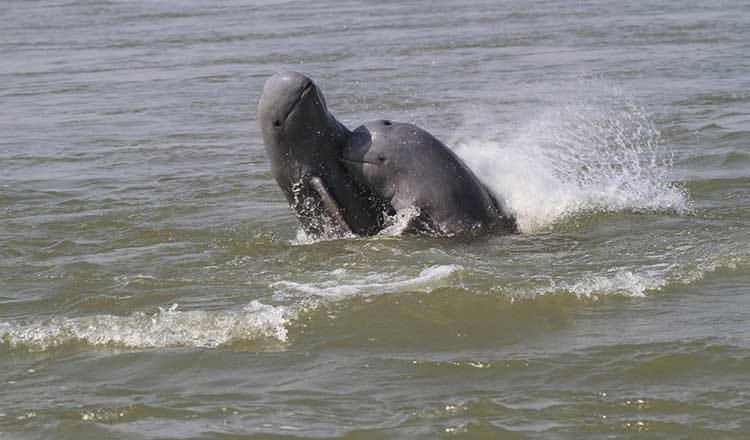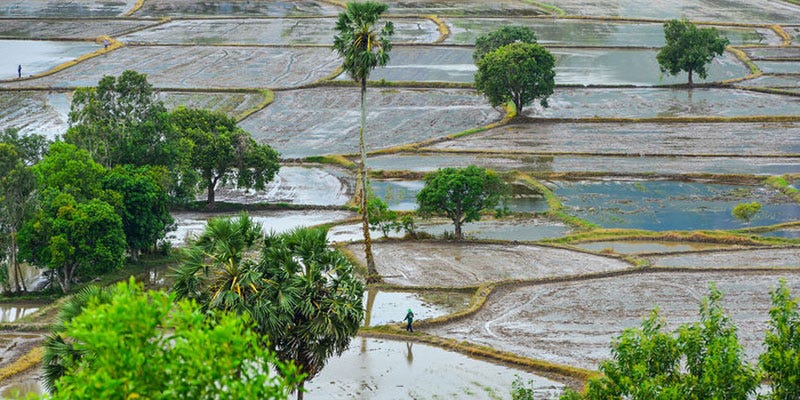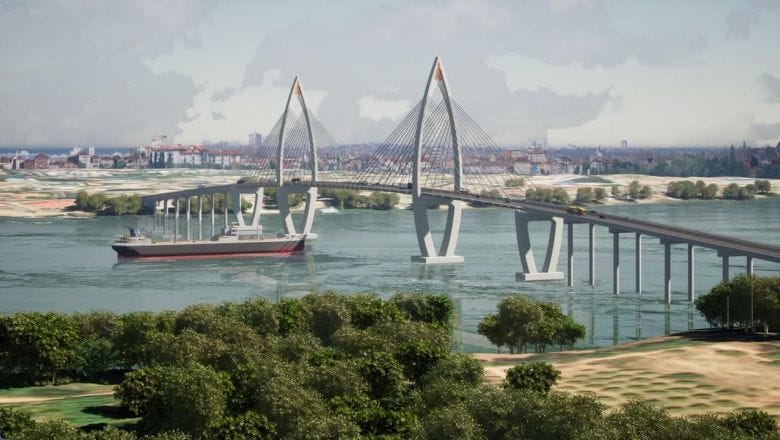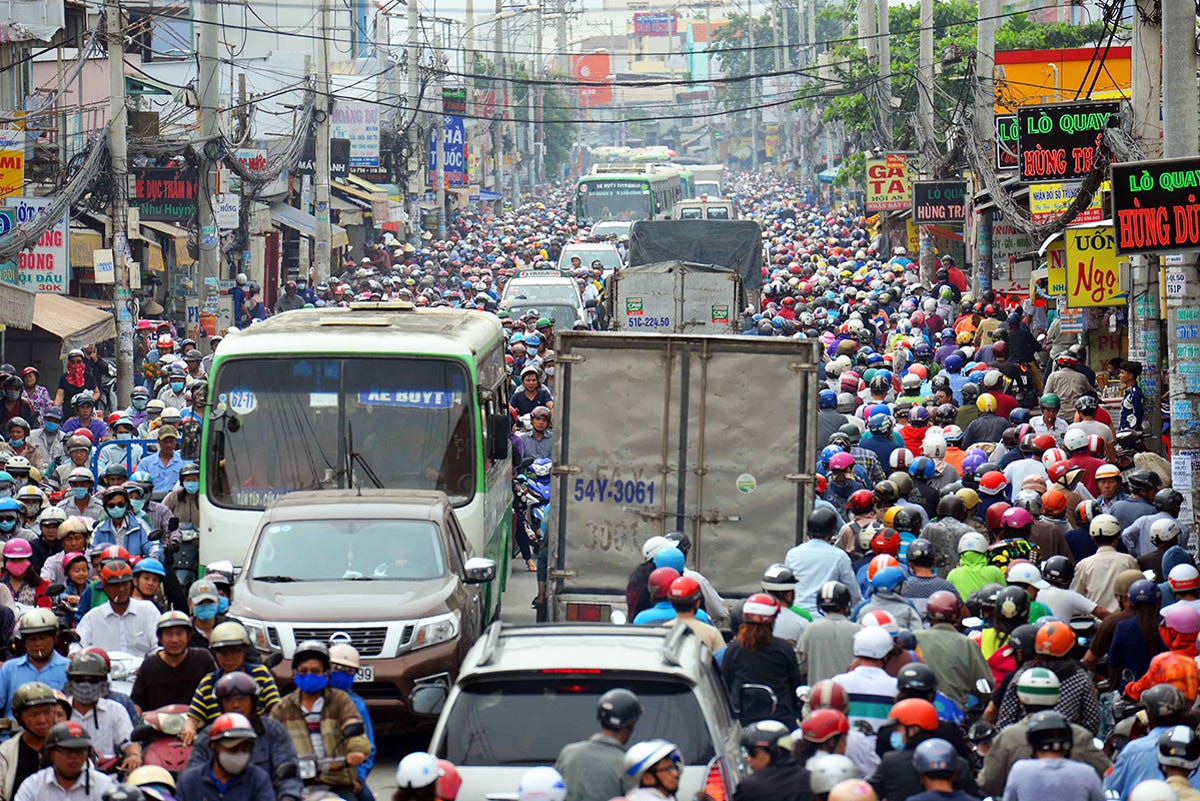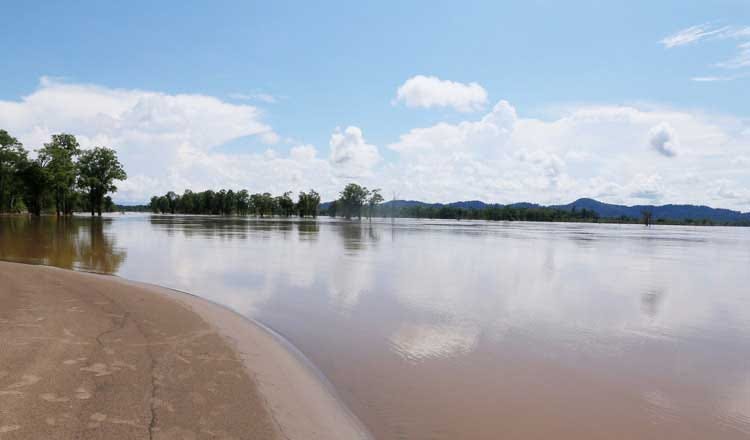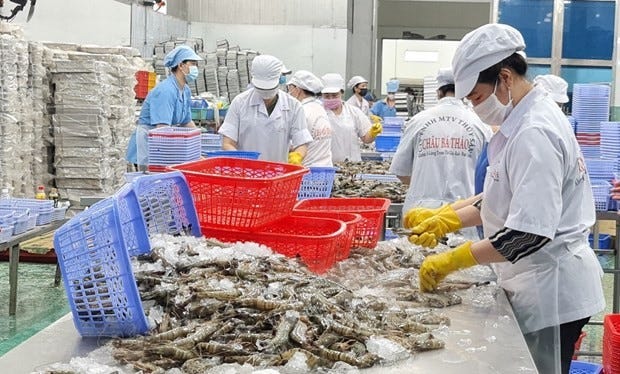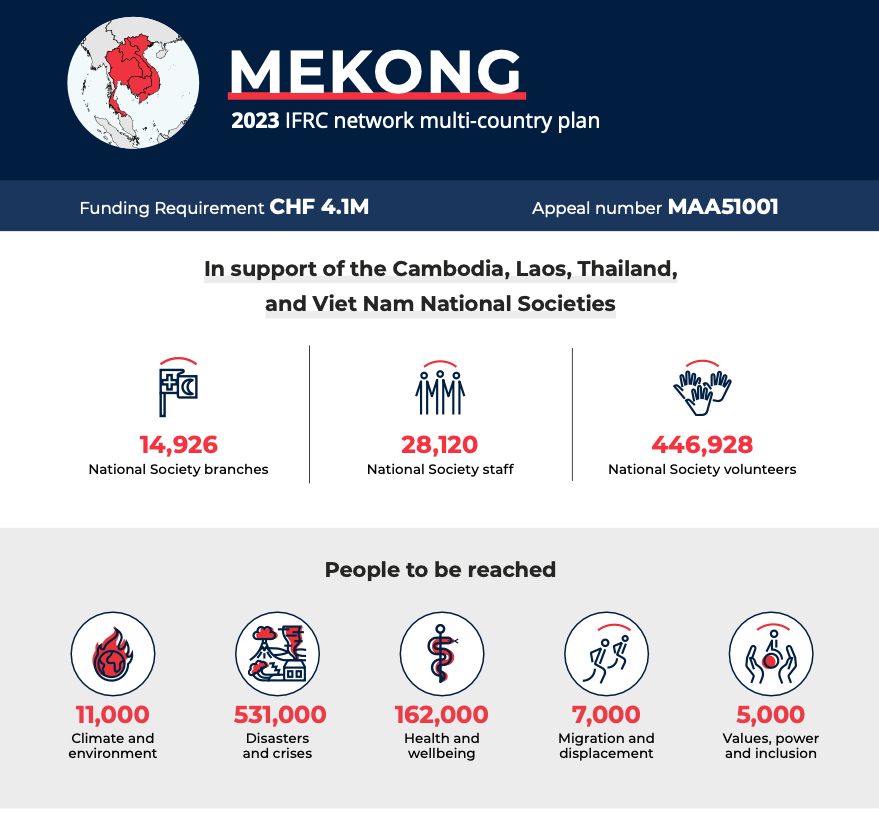Bridging Ecology with Economy
Dolphins are disappearing, salinity increasing, but agriculture, fisheries and forestry expanding, bridge building is booming and more development financing is arriving
UPDATE: Today, The Long Mekong Daily navigates the delicate balance between ecology and economy. Dolphins are seriously endangered, but the Cambodian government is making steps in the right direction. Salinity in the Mekong delta keeps rising and freshwater is an expensive commodity. Bridges are being built at a rapid rate to speed provincial connectivity, boost the Mekong economy and relieve traffic congestion.Agriculture, fisheries and forestry exports from Vietnam are booming. But, a new report from Relief Web looks says rapid urbanisation, climate change and environmental pressures, along with recurring disasters are the major concerns for Cambodia, Laos, Thailand and Vietnam in 2023. Read on!
Endangered Freshwater Dolphins
Authorities seek to promote the conservation area on the Mekong River as a Natural World Heritage Site in a last-ditch effort to protect the remaining endangered freshwater dolphins in the country.
The mighty Mekong River is home to endangered Irrawaddy freshwater dolphins, considered as the living heritage of the country. But in the last seven days, three dolphins were found dead due to illegal fishing in the Mekong River.
Neth Pheaktra, spokesman of Ministry of Environment, said dolphins are dying because they are being trapped by fishing nets every year and so conservation efforts are needed to save them.
Pheaktra added that about 89 dolphins are left now on the biodiversity-rich Mekong River, and a working group led by the Ministry of Environment is preparing to submit a proposal for the conservation area to be included in the UNESCO Natural World Heritage List
He said that it is very sad to hear about repeated deaths of dolphins due to fishery crimes. He added 11 dolphins have died so far this year, while a total of 29 dolphins died
in the last three years.
There are fewer than 250 freshwater Irrawaddy dolphins left in the three river basins where they are found. One among them is Mekong River in Cambodia.
“I have suggested earlier that Zero Snaring Campaign should not only focus on traps on the ground, but on the air and water as well. I urge people not to enter the restricted dolphin conservation area because only 89 are left now. If they continue to die it would be difficult to produce more dolphin,” Pheaktra said.
Welcoming the move, Seng Teak, Country Director of WWF-Cambodia, said yesterday, “The effort to protect the dolphin conservation area in the Mekong River is good news. We congratulate the government for its efforts. [Part of ] the Mekong River deserves to be registered as Natural World Heritage Site.”
Read the full article here.
Salinity arrives sooner than expected in Mekong Delta
Last weekend, Vo Thi Ngoc Anh, 50, a resident in Binh Dai District of Ben Tre, switched to bottled water for cooking instead of using tap water. "The running water has been tasting salty for two weeks now and I could not use it for cooking," she said.
The water plant in Long Dinh Commune, where Anh lives, gets its water from branches of the Mekong River for processing and this year, salt intrusion arrived sooner than expected.
She said her family has also stored more than 10 cubic meters of rainwater for family use in addition to buying bottled water.
Pham Van Tri, 65, a resident of Giao Long Commune of Chau Thanh District, some 10 km away, has tanks and containers ready to store freshwater.
He intends to store 15 cubic meters in tanks and containers and 25 cubic meters in a water storage bag he has just bought for VND3 million (US$127).
Tri said every year it takes until late January or early February for saltwater to arrive, but the situation has been different this year.
Read full story here.
Phnom Penh-Areyksat Bridge will grow economy, say experts
Social analysts and historians see that the construction of a bridge from Phnom Penh to Kandal province as a sign of Cambodia's growth. Meas Ny, a social development researcher, said that when compared to the past, Cambodia’s development has been rapid. He believes that the construction of the Phnom Penh-Areyksat Bridge which connects Phnom Penh to Kandal province will improve traffic flow in the city.
He added that an increased economic infrastructure will help stimulate economic growth in Cambodia in the future. One of his concerns was that funding came from foreign loans. This year, the Kingdom’s debt has increased substantially. “There are both congratulations and concerns. Due to a growth in borrowing, both public and foreign, debt has increased to more than two billion dollars,” he said.
“However, we recognise that this is not at high-risk levels yet. As long as our economy is remains robust, it is acceptable. It may become an issue if we continue to borrow and do not focus on the domestic economy,” he added. He said that in order to prevent this from happening, the government must also examine the land crisis. In some cases, when large developments are made, the people do not benefit equally, with land occupants and those evicted from development land not receiving adequate compensation.
“The expansion of the Kingdom’s economic infrastructure is not certain to bring back social equity, and this is something the government must consider,” he continued.
Cambodian historian Sambo Manara also said that the construction of the bridge represents much needed development in Phnom Penh, because the capital has grown significantly.
Read full story here.
Ho Chi Min City gateway enlarged to boost connectivity with Mekong Delta
Work started on the project on Tuesday morning to expand a 7-km section of the highway that runs between Nguyen Van Linh Boulevard and the border of Ho Chi Minh City and Long A Province. Set to be completed in late 2024, the project will cost VND1.5 trillion (US$63.6 million).
Luong Minh Phuc, director of the Transportation Works Construction Investment Project Management Authority of HCMC (TCIP), said the project will build new roads running along the highway and will also enlarge the existing highway.
The project also includes the construction of a new bridge that will be 40m long and 34m wide, as well as the expansion of an existing bridge.
After the expansion, the highway will have six lanes instead of the current four.
According to TCIP, which oversees the project, the enlarged highway section will improve traffic connections and thus contribute to boosting trade between the city and the Mekong Delta, Vietnam's agriculture hub.
Read full story here.
Construction of Mekong River-Crossing Kratie Bridge to begin next month
Prime Minister Hun Sen will break ground on the construction of the Mekong River-Crossing Kratie Province Bridge and the improvement of National Road 7 from Skun downtown to Kampong Cham town in January 2023, said a release of the Ministry of Public Works and Transport (MPWT).
The organising ground-breaking ceremony for the two Chinese-financed projects was discussed in a meeting at MPWT led by Lim Sidenin, Secretary of State at the ministry and attended by members of committees and sub-committees to divide responsibilities to effectively and safely manage the event, the release said.
Sidenin told the officials who attended the meeting that the responsibilities need to be divided among members of the committees and sub-committees in charge of the event so that Prime Minister Hun Sen will be able to break ground the construction of the projects successfully and smoothly.
“The officials exchanged ideas regarding key points such as preparing speeches for the leaders, selecting the location for the event, and preparing invitation letters to top government officials, national guests and international guests to take part in the very important event. Additionally, they also need to prepare information data, photos and videos and files,” the release pointed out.
All materials—both hard and soft copies—need to be prepared and sent to the Cabinet of Prime Minister Hun Sen for review and requesting public announcement beforehand on his official social media.
Sun Chanthol, Minister of MPWT, said during his last inspection visit to the Phnom Penh-Sihanoukville Expressway that the National Road 7 has been expanded to four from two lanes from Skun district to Kampong Cham city—about 47 kilometres—will, along with other major national roads, support the implementation of the Master Plan for Preah Sihanouk Province Multipurpose Special Economic Zone.
Read full article here.
Agro-forestry-fishery exports set new record in 2022
The agro-forestry-fishery export turnover in 2022 posted a new record, hitting over US$53.2 billion in 2022, a year-on-year increase of 9.3%, according to the Ministry of Agriculture and Rural Development (MARD).
The ministry reported that the sector enjoyed a trade surplus of US$8.5 billion, 30% higher than that of 2021.Specifically, the export value of main agricultural products reached US$22.59 billion, up 4.8%; main forest products reached US$16.93 billion, up 6.1%; and aquatic products hit US$10.92 billion, up 22.9%.
The agricultural sector had seven groups of products recording export turnover of over US$3 billion, including wood and wooden products with US$10.92 billion, shrimp US$4.33 billion, coffee US$3.94 billion, rice US$3.49 billion, rubber US$3.31 billion, fruit and vegetables US$3.34 billion, and cashew nuts US$3.07 billion.
Read full article here.
Mekong 2023 IFRC network multi-country plan (MAA51001)
All four Mekong countries in this plan – Cambodia, Laos, Thailand and Vietnam – score differently on the Human Development Index (Vietnam 0.70, Thailand 0.77, Lao 0.61 and Cambodia 0.59). Despite this, they share common challenges and emerging risks such as rapid urbanization, climate change and environmental pressures, along with recurring disasters, health risks, rising inequalities, migration, gender discrimination and violence, and the ongoing effects of the COVID-19 pandemic.
Cambodia
Having sustained high levels of economic growth over the last two decades, Cambodia is on the path to becoming a higher middle-income status country by 2030. However, high levels of inequality and the impact of the COVID-19 pandemic on local economies are hampering growth. This is particularly true for the most vulnerable, marginalized rural populations, who were hit significantly harder by the pandemic’s effects on employment, household wages and non-wage incomes than macro-economic trends would suggest (UNICEF, 2021). At the 2021 United Nations Conference on Trade and Development, Cambodia remained categorized as a least developed country.
According to the Asian Development Bank, 14.5 per cent of the population across Cambodia was undernourished in 2017–2019. Stunting among children aged under five is 32.4 per cent and wasting among the same group is 9.7 per cent. Maternal mortality had reached 160 per 100,000 live births in 2017, and the mortality rate for children aged under five was 27 per 1,000 live births in 2019. Neonatal mortality stands at the rate of 15 per 1,000 live births. As of 2017, only 25.8 per cent of the population used safely managed to drink water services, with considerable differences between urban (56.6 per cent) and rural (16.7 per cent) populations.
Cambodia remains one of the world’s more disaster-prone countries, particularly due to seasonal flooding and droughts. Over the last 10 years, a succession of droughts and floods have resulted in significant loss of life and economic loss. Cambodia is a less developed, agrarian country, where more than 75 per cent of people live in rural areas, and there is a strong dependency on climate-sensitive sectors such as agriculture, land, water resources, forestry and fisheries. Together, these factors make Cambodia particularly vulnerable to the effects of climate change, and they are further exacerbated by weak adaptive capacity, poor infrastructure and limited institutional capacity. The Government recognizes floods and droughts as the main driver of poverty in the country, and rural households, particularly women in rural settings, are especially vulnerable to climate change and have more difficulty adapting to it.
Cambodia is in general highly exposed to water-related diseases, including diarrhoeal diseases, typhoid fever, leptospirosis, melioidosis, viral hepatitis, and schistosomiasis. The impact of climate change in Cambodia may also be increasing the risk of water- and vector-borne diseases, and the likelihood of epidemics. Drought, rains and particularly floods are linked with an increased risk of outbreaks of diseases including diarrhoea, cholera, dengue, malaria and respiratory tract infections. These outbreaks put additional strain on local health services in disasters. High temperatures also represent an environmental driver for vector-borne diseases such as dengue.
Download full report here.




